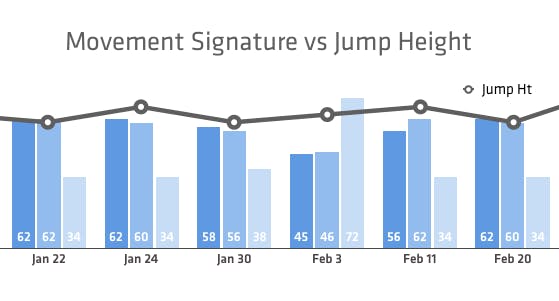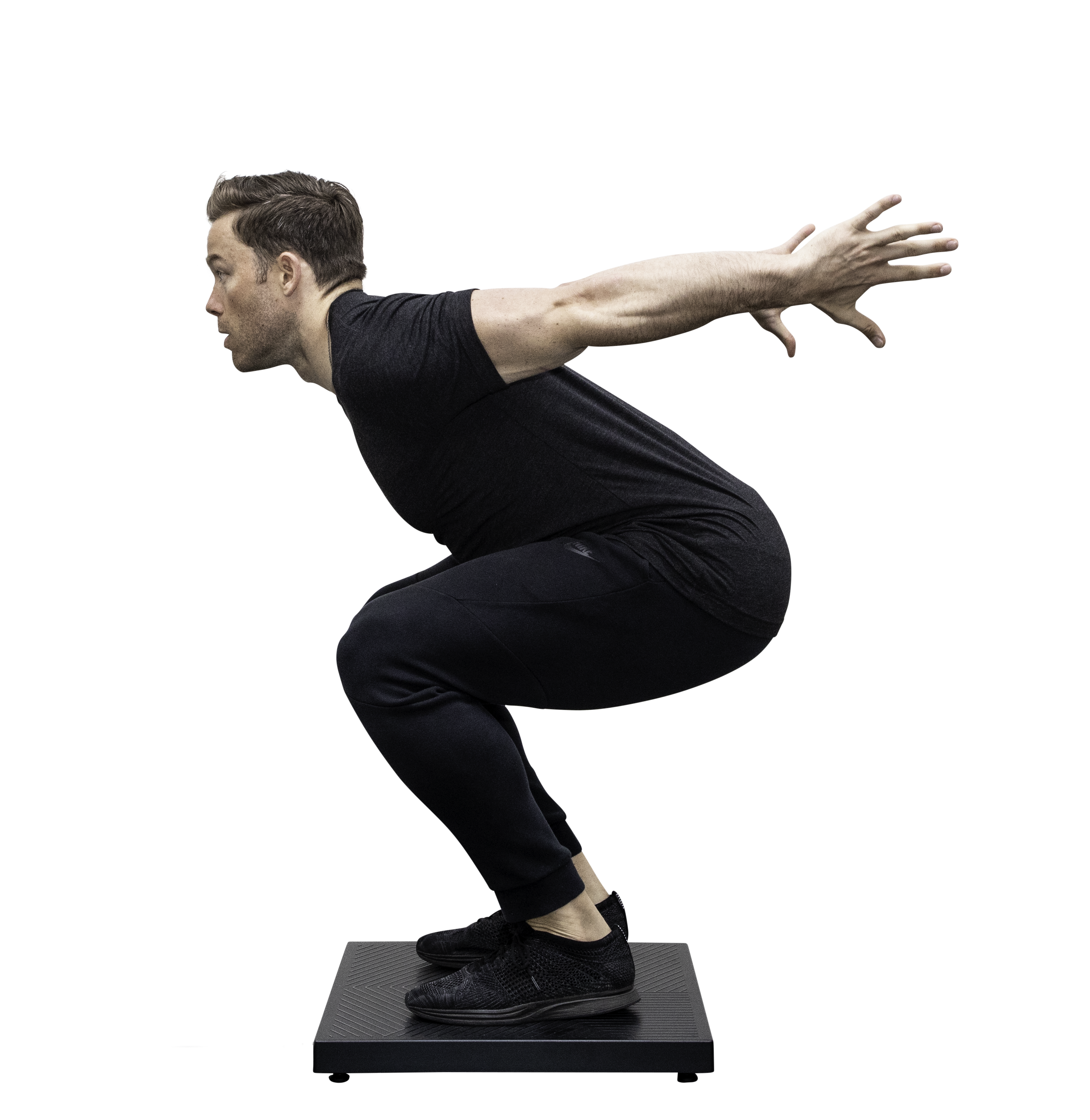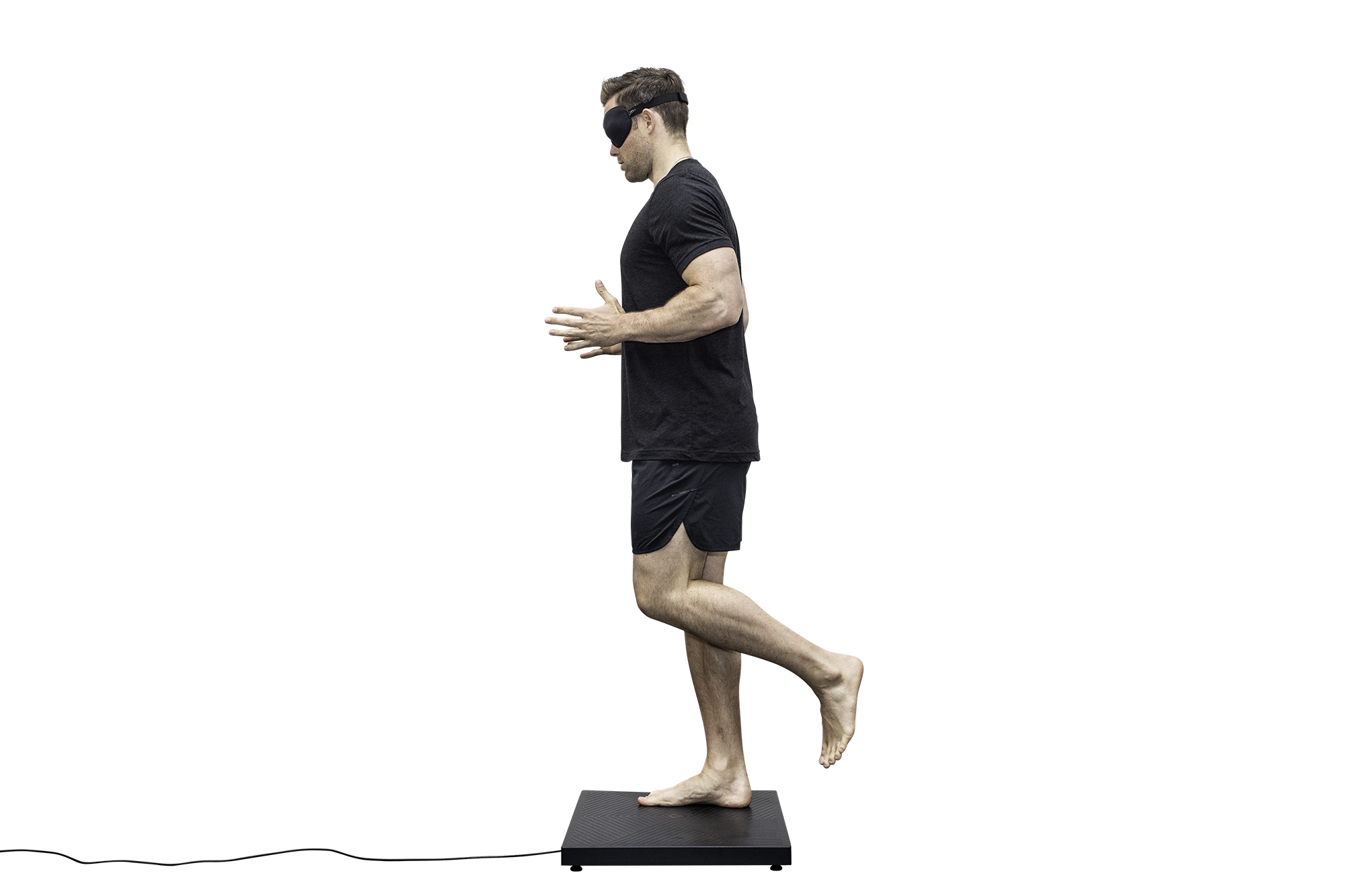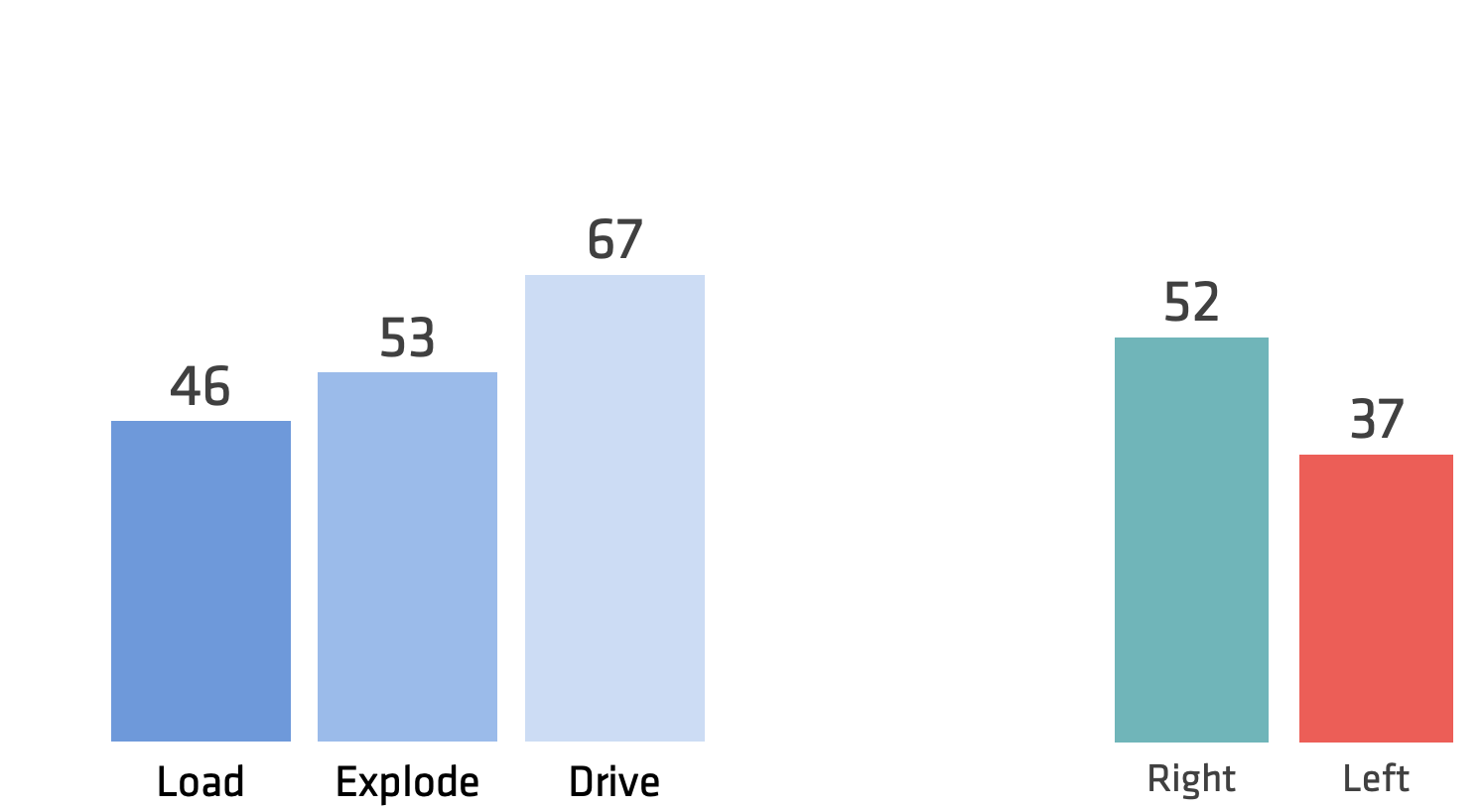This article discusses the potential influence of fatigue on the different Sparta Scans and their results, including general considerations for fatigue monitoring.

The Short Answer:
Creating a concrete and accurate definition of fatigue is a constant struggle, both for practitioners and for researchers. Because of this poor definition, there are contradicting conclusions and recommendations from the literature, leading to confusion for practitioners in all industries. Fatigue is extremely complex, multifaceted, and context-dependent. For example, are the fatigue an individual experiences immediately after running a marathon and the fatigue they experience the following day, the same? Most practitioners simply would like to know when an individual is "too fatigued," but unfortunately the answer isn't ever going to be cut and dry.
That being said, there are a few basic trends we have identified from the suite of Sparta assessments that can be related to fatigue, pain, and/or altered movement strategies.
-
A decrease in jump height
-
When utilizing the Jump Scan, an overall decrease in jump height along with a decrease in all three force-time variables shows an overall decrease in mechanical output and may be an indicator of fatigue.
-
-
A decrease in Balance score
-
The Balance Scan can be utilized as an alternative to the Jump Scan to identify fatigue as it requires minimal effort.
-
Decreases in Balance scores, often on the dominant leg, may be an indicator of fatigue.
-
-
A change in Movement Signature
-
A change in the relationship of Movement Signature variables can detect altered movement strategy and may be an indicator of fatigue or pain. This is best understood as a change in an individual's highest and/or lowest variables when compared to baseline.
-
This can often occur without any significant decrease in Jump Height.
-
A decrease in Drive may be an indicator of acute fatigue.
-
A simultaneous decrease in Load and increase in Drive may be an indicator of fatigue
-
Because the Sparta Scans assess the neuromuscular system, both internal and 3rd party research has shown they can be sensitive to changes in recovery state or fatigue levels. Research suggests that while jump height, peak force, and peak power may be reduced, altered movement strategy is the most sensitive variable for identifying fatigue (1). As different individuals can respond and display different types of fatigue in different ways, it is most important to be able to identify meaningful change for each individual. There is not currently (nor will there ever be) one magical number, variable, or threshold that gives a definitive answer that an individual is indeed "fatigued."
The Long Answer:
"‘Fatigue’ as there are multiple types is both very difficult to simulate with laboratory protocols and extremely difficult to measure, especially reliably and validly over time."
- Dr. Tim Hewett

The concept of fatigue is complex, multifaceted, and context-dependent. Because of the complexity, defining this phenomenon can be extremely challenging both for practitioners as well as in the current literature. The best definition of fatigue is probably the simplest definition: the inability to maintain the same level of mechanical output. By this definition, fatigue can potentially be relatively simple to quantify in measure; we can utilize the Jump Scan and simply evaluate the jump height. If jump height is down, the individual is fatigued! Problem solved? Likely not. The real reason practitioners are interested in monitoring fatigue or understanding how fatigue will affect the results of their assessments is more about the potential negative consequence of fatigue. There are two different primary concerns with fatigue:
- Decreased ability to perform; less efficient at a task
- Heightened risk of injury
We will examine these two concerns in greater detail, but first, let us answer the question at hand. With the knowledge that fatigue is multifactorial and extremely difficult to quantify, there are still different trends we can identify and research we can explore to help answer this question in a way that can guide practitioners. There is not currently (nor will there ever be) one magical number, variable, or threshold that gives a definitive answer that an individual is indeed "fatigued." There are many different types of fatigue, and fatigue can manifest itself in many different ways. For example, are the fatigue an individual experiences immediately after running a marathon and the fatigue they experience the following day, the same?
Because the Sparta Scans assess the neuromuscular system, both internal and 3rd party research has shown they can be sensitive to changes in recovery state or fatigue levels. The first assessment in question when it comes to assessing fatigue is typically the Jump Scan. In support of our previous definition of fatigue, multiple studies have found jump height from a vertical jump to be sensitive enough to identify fatigue in individuals. This research has been performed both specifically utilizing the Sparta system (3), as well as many other systems, devices, and methods (2, 5, 6, 7, 8). A 2017 meta-analysis found that utilizing the average jump height from multiple trials, as the Sparta system does, seems to be more sensitive than simply using one trial or the max jump height of multiple trials (7).

When utilizing the Jump Scan in the Sparta system, the simplest and most obvious piece to utilize when identifying fatigue is simply jump height. Many of our partners use this concept to track changes in vertical jump height alongside changes in the individual's Movement Signature over time. Along with a decrease in jump height, there often is a decrease in all three variables Load, Explode, and Drive. Logically this decreased performance can be an indicator of detraining or fatigue masking performance. The greatest challenge with simply utilizing jump height is that it inherently gives us a measure of effort from the individual as well. So regardless of fatigue, a lower jump height could potentially be due to a lower effort from the individual. This becomes up to the practitioner to identify if the decreased output is simply due to poor compliance and effort, or truly reflective of fatigue. Here we see our first example of the difficulty in measuring and identifying fatigue outside of a laboratory setting.

The most recent fatigue research utilizing the Sparta system can potentially be a solution to this challenge. A 2019 research study utilizing the Balance Scan determined that a decrease in Balance scores, often on the dominant leg, may be an indicator of fatigue in rugby athletes (4), with similar findings having been found in other populations as well (9). The Balance Scan can be utilized as an alternative to the Jump Scan to identify fatigue as it requires minimal effort and motivation and thus may be a better option in some instances. Previous research has assessed and shown the Balance Scan to be a reliable measure of postural control (10). This is important as it is critical to balance practicality with reliability and validity in real-world settings. All are important, but without reliability, the others fail by default.
If we return to the Jump Scan, it is key to point out that simply utilizing the metric of jump height doesn't truly take advantage of all of the data the Sparta system analyzes. The Movement Signature displays three variables of Load (average eccentric rate of force), Explode (average relative concentric force), and Drive (relative concentric impulse) that represent an individual's overall movement strategy. It is important to understand that all three variables have a component of both the magnitude and the timing of force, as more recent research has suggested it is the altered movement strategy that is most sensitive to identifying fatigue (1). However, as different individuals can respond to stress and display different types of fatigue in different ways, it is most important to be able to identify the meaningful change for each individual.
A change in movement strategy is most easily identified by a change in the relationship of the Movement Signature variables. Individuals usually have a relatively consistent history of overall Movement Signature shape. A significant switch, for example, a change in an individual's highest and/or lowest variables when compared to their historical data, should be noted. This change in the relationship of Load, Explode, and Drive can identify an altered movement strategy and may be an indicator of fatigue or pain. These altered mechanics can often occur without a significant change in jump height, further validating the use of these variables over just a measure of jump height for fatigue monitoring.
Specific trends related to individual variables and their relationship with fatigue have also been studied and noted from the Jump Scan and the resulting Movement Signature. Two different trends have been noted: first being a decrease in Drive. A 2019 study out of the University of the Pacific found that along with jump height, Drive was sensitive to an acute fatiguing protocol (3). The second specific trend is a combination of a decrease in Load and an increase in Drive. Load is based on the rate of force development, and so lower load scores mean that force is developed more slowly and eccentric duration is longer. Drive is based on concentric impulse, which means that more time in the concentric phase usually results in higher drive scores. An individual with a significant decrease in Load and increase in Drive is creating force less quickly and taking more time to apply this force.

Sparta Assessments & Fatigue
-
A decrease in jump height
-
When utilizing the Jump Scan, an overall decrease in jump height along with a decrease in all three force-time variables shows an overall decrease in mechanical output and may be an indicator of fatigue.
-
-
A decrease in Balance score
-
The Balance Scan can be utilized as an alternative to the Jump Scan to identify fatigue as it requires minimal effort.
-
Decreases in Balance scores, often on the dominant leg, may be an indicator of fatigue.
-
-
A change in Movement Signature
-
A change in the relationship of Movement Signature variables can detect altered movement strategy and may be an indicator of fatigue or pain. This is best understood as a change in an individual's highest and/or lowest variables when compared to baseline.
-
This can often occur without any significant decrease in Jump Height.
-
A decrease in Drive may be an indicator of acute fatigue.
-
A simultaneous decrease in Load and increase in Drive may be an indicator of fatigue
-
The Effects of Fatigue
The two main concerns most practitioners have as related to fatigue are the potential decreased ability to perform and a heightened risk of injury. While these negative consequences may seem obvious, it is also important to take a critical look at them.
A decrease in performance relative to what? How much of a decrease in performance is too much? What is the risk-reward of the specific situation? It is extremely important to understand the context when evaluating whether or not someone should be withheld based on their level of fatigue. Is this a training exercise or a live combat mission? Is this the preseason or the playoffs? Is that individual's 60% better than the alternate's 100%? As you can see, the answers to these questions are not ones for Sparta to provide. They rely on organizational communication and trust, and oftentimes hindsight is 20:20.
Fatigue is a commonly accepted risk factor for all different types of injuries. A recent study assessed this claim, as it has been proposed that fatigue-related reductions in muscle strength as well as changes in kinetics and kinematics that may increase the risk of injury, specifically ACL injury (11). However, data from a recent meta-analysis determined neither acute or chronic fatigue seems to have any influence on the likelihood of lower limb injury (12). This conclusion may be a bit startling as it seems common sense that an individual who is more fatigued should be at a greater risk of injury. There are, of course, different studies that have found these relationships. Due to the complexity of measuring and identifying fatigue, as well as the multifactorial complexity of injury the relationships between the two are not going to be cut and dry.
Conclusion:
There is not currently (nor will there ever be) one magical number that gives you a definitive answer that an athlete is indeed fatigued, or too fatigued to perform. Unfortunately, the human body doesn’t operate in such a simple black and white way. Because fatigue is so multifactorial, the best way to address this is probably a combination of analyses and efforts specific to the context of each situation. Because the Sparta Scans assess the neuromuscular system, both internal and 3rd party research has shown they can be sensitive to changes in recovery state or fatigue levels. It is most important to be able to identify meaningful change for each individual and interpret this information with caution.
References:
- Gathercole, Rob, et al. "Alternative countermovement-jump analysis to quantify acute neuromuscular fatigue." International journal of sports physiology and performance 10.1 (2015): 84-92.
- Edwards, Toby, et al. "Reliability and Sensitivity of Neuromuscular and Perceptual Fatigue Measures in Collegiate Men's Basketball." Journal of strength and conditioning research (2018).
- Perry, Lena & VanNess, J. Mark & Lydon, William & Rossi, Joey & Jensen, Courtney. "The Influence of Fatiguing Exercise on Power Output." Medicine & Science in Sports & Exercise. (2019)
- Troester, Jordan C., and Rob Duffield. "Monitoring residual 36 h post-match neuromuscular fatigue in rugby union; a role for postural control?." European journal of sport science 19.10 (2019): 1312-1319.
- Jiménez-Reyes, Pedro, et al. "Jump height loss as an indicator of fatigue during sprint training." Journal of sports sciences 37.9 (2019): 1029-1037.
- Kamandulis, S., et al. "Changes of vertical jump height in response to acute and repetitive fatiguing conditions." Science & Sports 31.6 (2016): e163-e171.
- Claudino, João Gustavo, et al. "The countermovement jump to monitor neuromuscular status: A meta-analysis." Journal of science and medicine in sport 20.4 (2017): 397-402.
- Johnston, Rich D., et al. "Physiological responses to an intensified period of rugby league competition." The Journal of Strength & Conditioning Research 27.3 (2013): 643-654.
- Steib, Simon, et al. "Effects of fatiguing treadmill running on sensorimotor control in athletes with and without functional ankle instability." Clinical biomechanics 28.7 (2013): 790-795.
- Troester, Jordan C., Jason G. Jasmin, and Rob Duffield. "Reliability of single-leg balance and landing tests in rugby union; prospect of using postural control to monitor fatigue." Journal of sports science & medicine 17.2 (2018): 174.
- Bourne, Matthew N., Kate E. Webster, and Timothy E. Hewett. "Is fatigue a risk factor for anterior cruciate ligament rupture?." Sports medicine 49.11 (2019): 1629-1635.
- Doyle, Tim L. "Meta-analysis: fatigue does not increase lower-limb injury risk." ISBS Proceedings Archive 36.1 (2018): 646.
